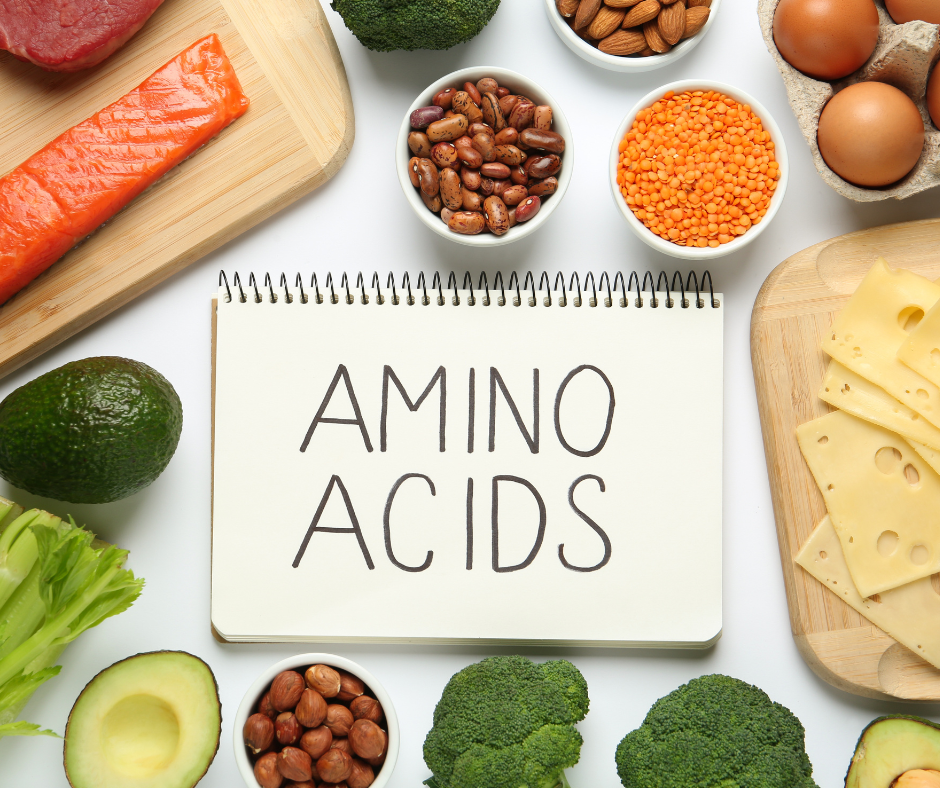Amino Acids in Tallow vs. Collagen Supplements

Why Amino Acids Matter for Skin and Collagen
Let’s talk collagen—the stuff that keeps your skin bouncy, firm, and smooth like a baby’s cheek. Collagen is that magical scaffolding beneath the surface that gives your skin its structure. But here’s the twist: collagen itself isn’t just some magic dust your body sprinkles around. It’s actually a type of protein, and all proteins are made from amino acids—tiny but mighty building blocks that your body pieces together like LEGO to make the things it needs.
Now, for collagen in particular, there are some star amino acids your skin absolutely loves. We’re talking about:
-
Glycine – the one responsible for those strong, triple-helix collagen structures (yes, your skin is a bit of a science project).
-
Proline – helps with elasticity and repair, like a supportive friend who knows how to patch things up.
-
Hydroxyproline – think of this one as the glue that stabilises collagen.
-
Alanine, arginine, and glutamine – bonus players that keep skin hydrated, help wounds heal, and support healthy cell growth.
But here’s the kicker: your body can’t just magic these amino acids out of thin air. You’ve got to keep supplying them—daily—either through your food or supplements. That’s where collagen powders and a good skincare routine (hello, tallow) come into play. They support collagen in different ways, and spoiler alert: they work best together.

What’s in Collagen Supplements?
Let’s start with what you’re putting into your body. Collagen supplements are usually made from animal sources—cows (bovine), fish (marine), or pigs (porcine). Sounds a bit odd at first, but don’t worry—they don’t taste or smell like a butcher’s shop. These supplements go through a process called hydrolysation, which basically breaks the collagen down into smaller peptides (pieces) so your body can absorb them more easily.
What makes these peptides so special? They’re absolutely packed with the very amino acids your body needs to make more collagen. That’s why people take them for things like:
-
Firmer, more elastic skin
-
Better hydration
-
Softer wrinkles (yes, please)
-
Stronger nails and hair
-
Happier joints and more comfortable movement
If you’re consistent—think 8 to 12 weeks—you’ll likely start to see visible changes. It’s not an overnight miracle, but it’s a game-changer in the long run.
So if your goal is to give your body the exact ingredients it needs to rebuild collagen from the inside out? Supplements are a pretty smart move.
What’s in Tallow?
Now, let’s flip things and talk about what you’re putting on your skin.
Tallow is a traditional skincare hero that’s making a comeback—and with good reason. It’s made from rendered fat (usually beef) and when it comes from grass-fed sources, it’s full of nutrients your skin absolutely drinks up. Unlike collagen supplements, tallow doesn’t give you amino acids—but that doesn’t make it any less powerful.
What tallow does give you is a potent mix of:
-
Vitamin A – the real-deal retinol that encourages your skin to keep making collagen
-
Vitamin D – supports skin cell turnover and renewal
-
Vitamin E – an antioxidant that protects your collagen from breaking down too fast
-
Vitamin K2 – helps keep your skin tone even and supports blood flow
-
Healthy fats – rebuild the lipid barrier, which is like your skin’s own protective raincoat
Because the rendering process removes the proteins and water, tallow doesn’t contain much in the way of amino acids. So no, it won’t build new collagen for you—but it will create the ideal conditions for the collagen you already have to stay strong, healthy, and protected.

Tallow’s Role in Collagen Support
So how does tallow actually help if it’s not giving you amino acids?
Think of it like this: collagen is the house, and amino acids are the bricks. Collagen supplements deliver more bricks so your body can build. Tallow, on the other hand, is the team that keeps the house in good shape—fixing leaks, patching cracks, and keeping the paint fresh.
Here’s what tallow does really well:
-
Vitamin A kicks skin cells (and the collagen-making ones!) into gear.
-
Vitamin E acts like a shield, blocking the free radicals that damage collagen.
-
Saturated fats strengthen the skin barrier, helping it hold onto moisture and stay calm.
-
Anti-inflammatory powers soothe stressed-out skin, which is a major cause of premature ageing and collagen loss.
-
Sebum-like structure means your skin absorbs it easily—no weird greasy layer here!
So while tallow might not make collagen, it absolutely supports the environment your skin needs to keep it.
Collagen Supplements vs. Tallow: Side-by-Side Breakdown
Let’s put them side-by-side so it’s easy to compare:
|
Feature |
Tallow (Topical) |
Collagen Supplements (Internal) |
|
Amino acid content |
Almost none |
Rich in glycine, proline, hydroxyproline |
|
Supports collagen synthesis |
Indirectly, by reducing inflammation and providing vitamins |
Directly, by delivering amino acids |
|
How you use it |
Smooth it on your skin |
Stir into your drink or take as a pill |
|
Key nutrients |
Vitamins A, D, E, K2, good fats |
Collagen peptides, amino acids |
|
Best for |
Calming, moisturising, protecting barrier |
Rebuilding collagen from within |
|
Time to see results |
4–8 weeks of regular use |
8–12 weeks of daily supplementation |
|
Recommended for |
Sensitive, dry, ageing skin or skin that needs repair |
Fine lines, thinning skin, joints, gut health |
They’re not competing—they’re teaming up. Tallow nurtures your skin from the outside. Supplements build it from within.
Can You Use Both Together?
Absolutely—and you should.
It’s a bit like eating your veggies and wearing SPF. One is internal, one is external. They both matter, and they work better together.
-
Tallow strengthens the skin barrier, calms irritation, and protects existing collagen.
-
Collagen supplements feed your body the exact amino acids it needs to build new collagen—not just for your face, but for your whole body: joints, gut, bones, and more.
Using both is like giving your skin a team of bodyguards—one on the inside, one on the outside.
Final Word
Here’s the simple truth: you don’t have to choose between tallow and collagen supplements—you can have both. And when you do, that’s when the real magic happens.
-
Want to replenish the building blocks? Take collagen.
-
Want to nourish and protect the surface? Use tallow.
-
Want radiant, strong, elastic skin that ages well? Do both consistently.
Because collagen isn’t just about slapping on a cream and hoping for the best. It’s about creating a lifestyle and skincare approach that works in harmony with how your body naturally functions.
No fillers, no fluff—just real skin support from the inside out.



